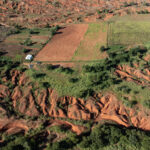In a bold stride toward expanding the frontiers of science and technology, NASA has once again taken to the skies—this time, operating not just beyond the stratosphere but within the very atmosphere that blankets our planet. The airborne laboratory, a sophisticatedly outfitted aircraft, is at the heart of this innovative quest. This initiative marks a significant leap in how we explore and understand the complex systems of Earth itself.
NASA’s Quest: An Airborne Laboratory
NASA’s airborne laboratory is not just any aircraft; it’s a meticulously engineered environment equipped with cutting-edge scientific instruments designed to study Earth’s atmosphere, weather patterns, and more. This flying lab, known as the “Earth Venture-Mission 1” (EVM-1), is part of NASA’s larger strategy to conduct intensive, short-duration investigations into environmental and atmospheric phenomena. From the heights at which commercial airliners cruise, the airborne lab gathers crucial data that ground-based or satellite observations might miss.
The aircraft used in these missions is typically a modified version of existing commercial or military planes, such as the ER-2 or the DC-8. These planes are uniquely retrofitted with equipment capable of everything from sampling airborne particles to advanced radar imaging. The adaptability of these airborne laboratories allows scientists to study various atmospheric conditions over oceans, polar ice, and landmasses, providing data pivotal for climate research and weather forecasting.
The missions flown by NASA’s airborne lab are meticulously planned. Researchers and engineers work together to pinpoint specific phenomena like hurricane formation or the effects of atmospheric aerosols on weather and climate. Once a target is identified, the lab takes to the skies, sometimes flying directly into the eye of a storm or hovering over melting glacial regions, capturing data that can lead to breakthroughs in understanding Earth’s environmental systems.
Managing the Skies: Global Mission Insights
Managing an airborne laboratory involves a complex coordination of logistics, technology, and international collaboration. NASA’s mission control centers, along with a team of meteorologists, flight engineers, and scientists, monitor every aspect of the missions to ensure safety and maximize data collection efficiency. The global nature of these missions requires clearances and cooperation from multiple international airspaces, illustrating the worldwide commitment to advancing climate science.
The data collected by these airborne labs don’t just stay within NASA. Findings are shared globally, contributing to international databases that support environmental and atmospheric sciences around the world. This collaborative spirit is vital in tackling global challenges such as climate change, severe weather forecasting, and understanding atmospheric pollution patterns, which are bound by no borders.
Sustainability and technological innovation are at the forefront of managing NASA’s airborne lab operations. The aircraft are often subject to upgrades to enhance their efficiency and reduce environmental impacts. For instance, integrating hybrid-electric systems or improving fuel efficiency plays a critical role in ensuring that these high-flying laboratories not only gather essential data but also lead by example in minimizing ecological footprints.
NASA’s airborne laboratory initiative represents a monumental effort in environmental and atmospheric research. With each mission, scientists are unlocking new knowledge and understanding of the Earth’s complex systems, paving the way for innovations in predicting and mitigating the effects of environmental phenomena. This airborne endeavor underscores a commitment to not only exploring space but also to preserving the health of our own planet, proving that sometimes, the most important discoveries come from looking inward, not just outward.









